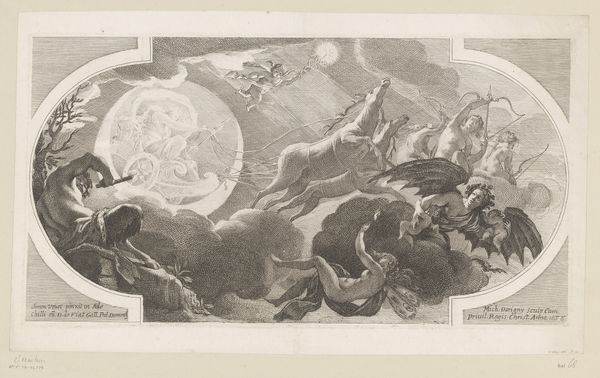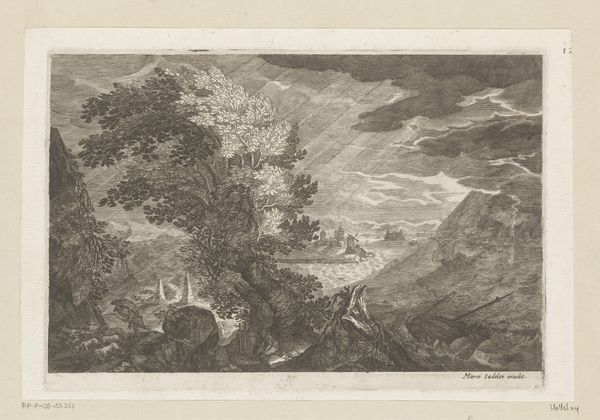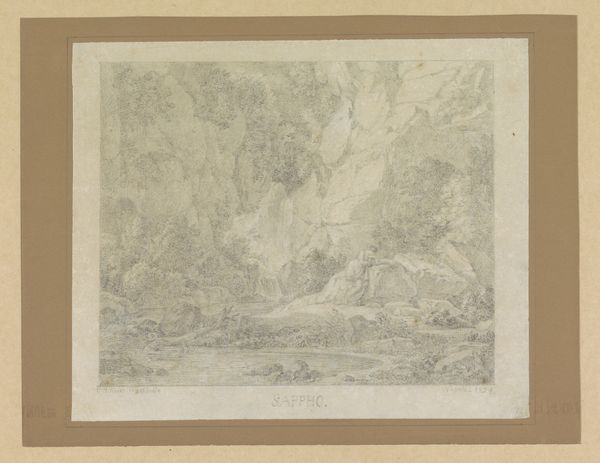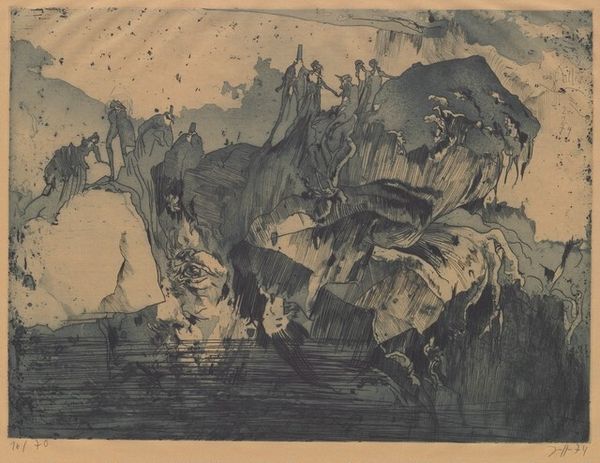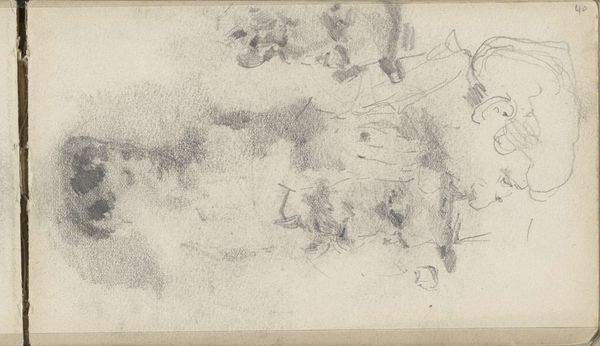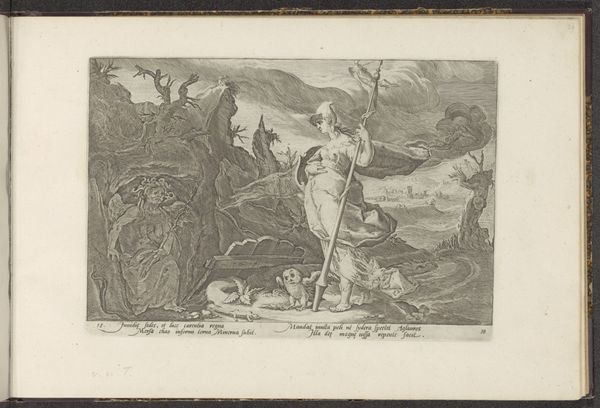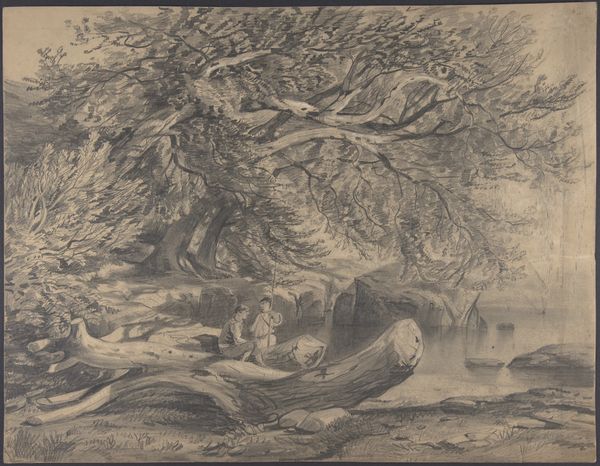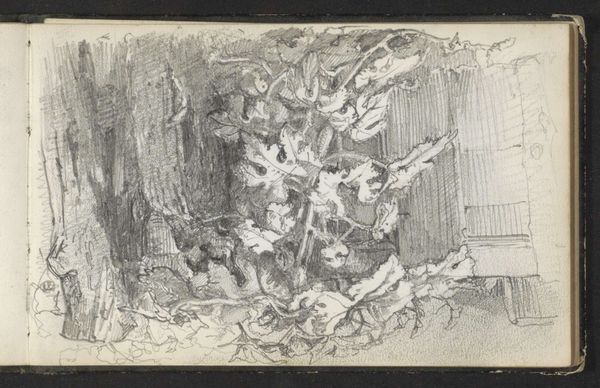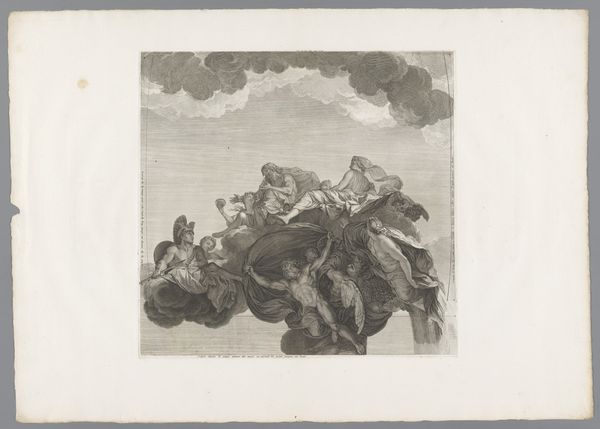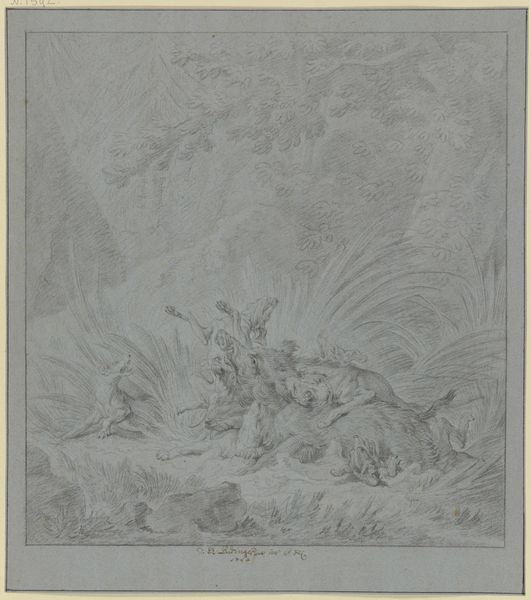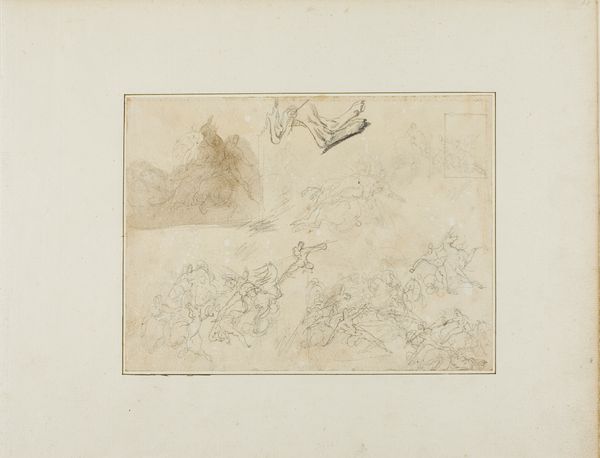
Fotoreproductie van (vermoedelijk) een tekening getiteld 'Heksentocht (Walpurgisnacht)' 1878
0:00
0:00
Dimensions: height 91 mm, width 138 mm, height 113 mm, width 172 mm
Copyright: Rijks Museum: Open Domain
Editor: This print, likely a reproduction of a drawing, is titled “Heksentocht (Walpurgisnacht),” or “Witches' Ride (Walpurgis Night)” and was made around 1878. It has a fantastical feel with all these figures swirling about. It’s eerie. What cultural roots might inform this image? Curator: The imagery certainly invokes powerful cultural memories. Walpurgis Night, deeply rooted in Germanic folklore, is the eve of the feast day of Saint Walpurga, celebrated on April 30th. It was believed to be a night when witches gathered on mountain tops, particularly the Brocken, for revelry and communion with demonic forces. Editor: So the swirling figures represent… witches then? Are the animals symbolic as well? Curator: Consider what animals often represented at the time – untamed instincts, a descent into a more primal state. Notice how the artist contrasts these wilder elements with figures that almost seem to aspire to a classical grace. Doesn't it spark an inner conflict? Are we witnessing liberation or degradation? The romantic era in particular loved those opposing dualities. Editor: That push and pull between the classical and the wild really shifts how I perceive the image. It's not just a chaotic scene of witches but also hints at something more profound about human nature and cultural anxieties. Thanks! Curator: Precisely! The image becomes a site where we grapple with those timeless questions, our place in nature, and our relationship to the darker sides of our own being. I will consider it next time Walpurgisnacht comes along.
Comments
No comments
Be the first to comment and join the conversation on the ultimate creative platform.
